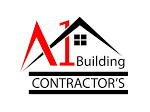In the competitive world of residential construction understanding how to effectively bid on projects is crucial for success. Bidding is not just about quoting a price; it’s about strategically presenting your skills, experience, and value to potential clients. A well-prepared bid can be the difference between winning or losing a project. This guide will walk you through the essentials of how to bid residential construction jobs like a pro, equipping you with the knowledge to stand out in a crowded field.
Whether you’re a seasoned contractor or just starting in the industry, mastering the art of bidding is essential. The process begins with a thorough understanding of the project scope, which includes reviewing architectural plans, specifications, and any other relevant documentation. It’s important to identify the unique aspects of each project, such as **custom design elements** or specific client requirements, which can affect your bid.
Moreover, cost estimation plays a pivotal role. This involves calculating material costs, labor, and any additional expenses that might arise. Accurate cost estimation ensures that your bid is competitive while still allowing for a reasonable profit margin. It’s also important to consider market conditions and adjust your bid accordingly to reflect changes in material prices or labor availability.
As you navigate the bidding process, remember that effective communication and transparency with your clients build trust and set the stage for a successful project. If you’re interested in expanding your business opportunities, consider building an accessory dwelling unit with us. It’s a great way to diversify your project portfolio and increase your revenue potential.
Understanding the Project Scope and Requirements
To bid effectively on residential construction jobs, it’s essential to have a comprehensive understanding of the project scope and requirements. This involves a detailed examination of the project plans and specifications to ensure that every aspect is accounted for in your bid. Project scope refers to the complete set of deliverables or features of the project, which can include architectural designs, engineering specifications, and client expectations.
Begin by thoroughly reviewing the architectural drawings and documents provided. This will help you identify the necessary materials, labor, and time required to complete the project. Pay close attention to any custom features or unique design elements that may impact the project timeline or budget. It’s crucial to clarify any uncertainties with the client or architect early on to avoid costly misunderstandings later.
Understanding the requirements also involves recognizing any local building codes or regulations that must be adhered to. These can influence not only the cost and materials but also the timeline of the project. Ensure that your bid reflects compliance with these regulations, as failing to do so can lead to project delays or additional costs.
Additionally, consider the client’s specific needs and desires. Engaging with the client to discuss their vision and expectations can provide invaluable insights that can be used to tailor your bid. This not only demonstrates your attention to detail but also helps to build a strong, trusting relationship with the client from the outset.
Conducting Thorough Market Research
Conducting thorough market research is a critical step in learning how to bid residential construction jobs successfully. Understanding the local market conditions allows you to position your bid competitively while ensuring profitability. Start by analyzing the pricing trends in your area; this involves assessing the average costs for materials, labor, and subcontractor services.
Gather insights on the competition by identifying other contractors who are bidding on similar projects. Understanding their pricing strategies, service offerings, and reputation can provide a benchmark for your own bid. It’s essential to determine what differentiates your services from the competition, whether it’s faster project completion, superior craftsmanship, or enhanced customer service, and emphasize these strengths in your bid proposal.
Additionally, keeping abreast of economic indicators can help you anticipate changes in demand. Factors such as interest rates, housing market trends, and local economic growth can all influence the volume and type of residential construction projects available. Armed with this information, you can adjust your bidding strategy accordingly, ensuring that your proposals are both competitive and sustainable.
Networking with suppliers and industry professionals can also provide valuable insights into market dynamics. Engaging with these stakeholders can offer early warnings about price fluctuations or supply chain disruptions, allowing you to adapt your bid to reflect the most current market conditions. A well-researched bid not only increases your chances of winning the contract but also ensures that you maintain a healthy margin while delivering value to the client.
Now that you’ve mastered the art of bid presentation, consider expanding your project portfolio by building an accessory dwelling unit with A1 Building Contractors. Our expertise in new home construction and custom homes can help bring your vision to life.

Leave a Reply
You must be logged in to post a comment.